Photo Credit: Andrew Laforet
The Great Lakes’ largest marsh: A case study in Point Pelee
2022 CMP Photo Story Competition Winner
by Parks Canada
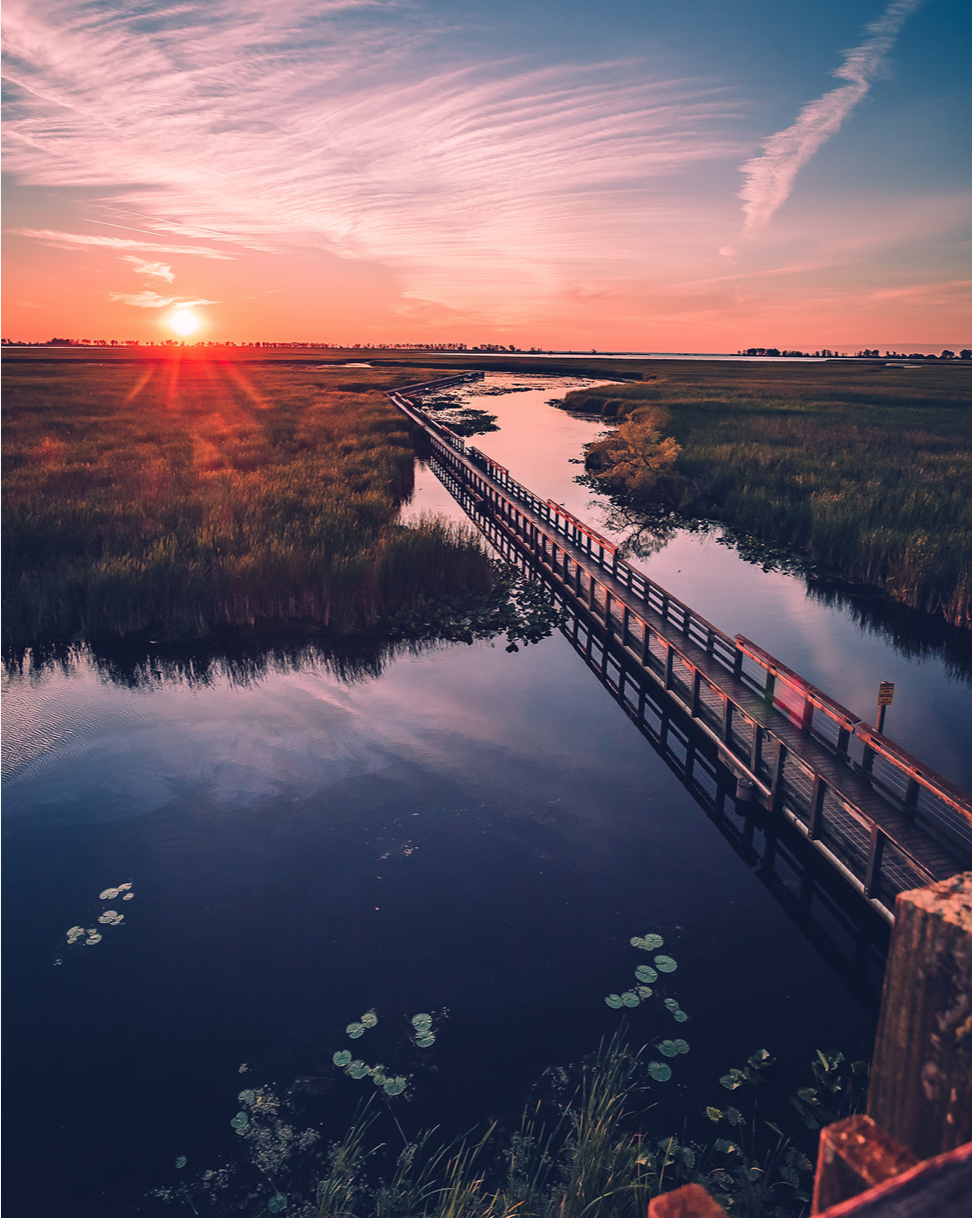
The marsh at Point Pelee National Park is one of the largest remaining marshes in southern Ontario and one of the few large marshes left in the Great Lakes system. It is a designated Ramsar Wetland of International Significance due to its unique features and role in conserving biological diversity. At 1,000 hectares, it is the largest habitat of Canada’s second smallest national park, covering two thirds of the park’s entire area and supporting 19 species at risk.
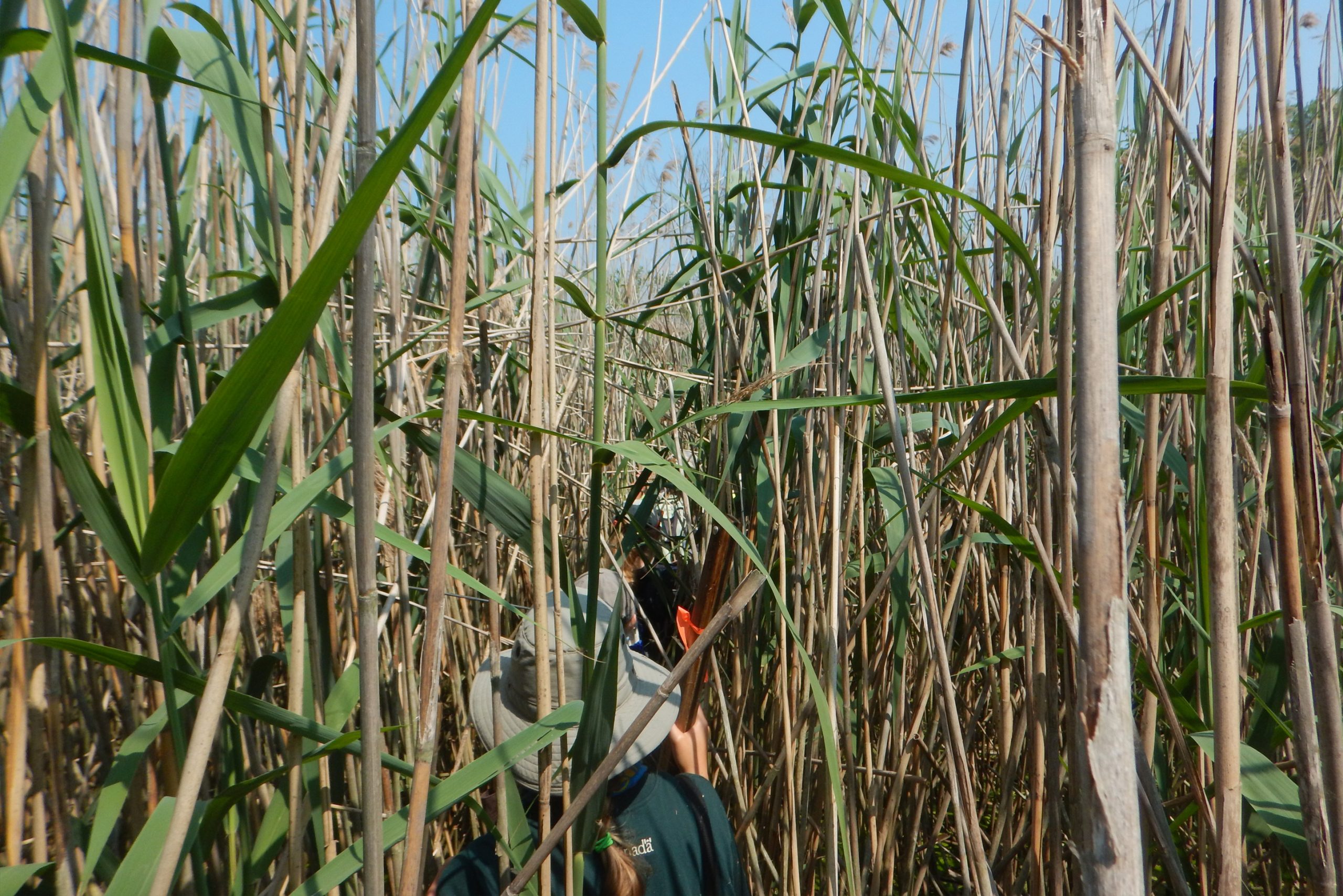
Assessing the marsh
Unfortunately, the health of the marsh is in decline. One of the most concerning threats is the reduction of open water in the marsh. Since the 1950’s, open water habitat has been reduced by 10 percent, or 100 hectares, due to the encroachment of invasive cattail and invasive Phragmites. Losing open water means losing open water and edge habitat, threatening habitat diversity and, in turn, threatening biodiversity. The habitat provided by the cattail mat does its part to support wetland species, but it cannot maintain the marsh’s remarkable biodiversity alone.
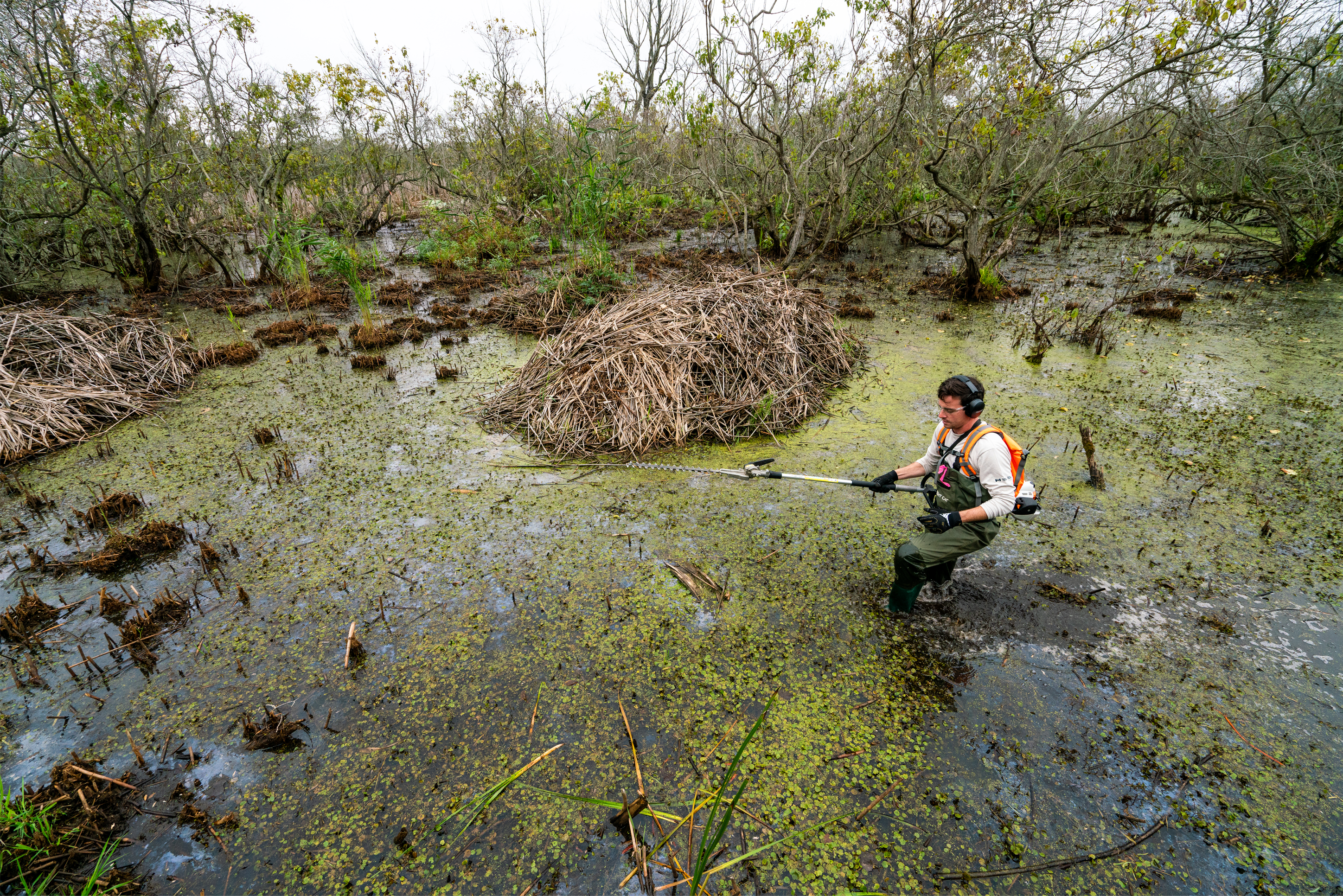
Planning a course of action
Recognizing the threats posed to the marsh, Parks Canada staff workshopped conservation strategies and the possible steps forward with knowledge holders, practitioners, experts, and learners. Through these discussions guided by the conservation standards, the Marsh Restoration Project was developed. The project aims to restore open water to the marsh by creating channels and ponds through the invasive cattail mat, as well as undertaking targeted removal of invasive Phragmites.
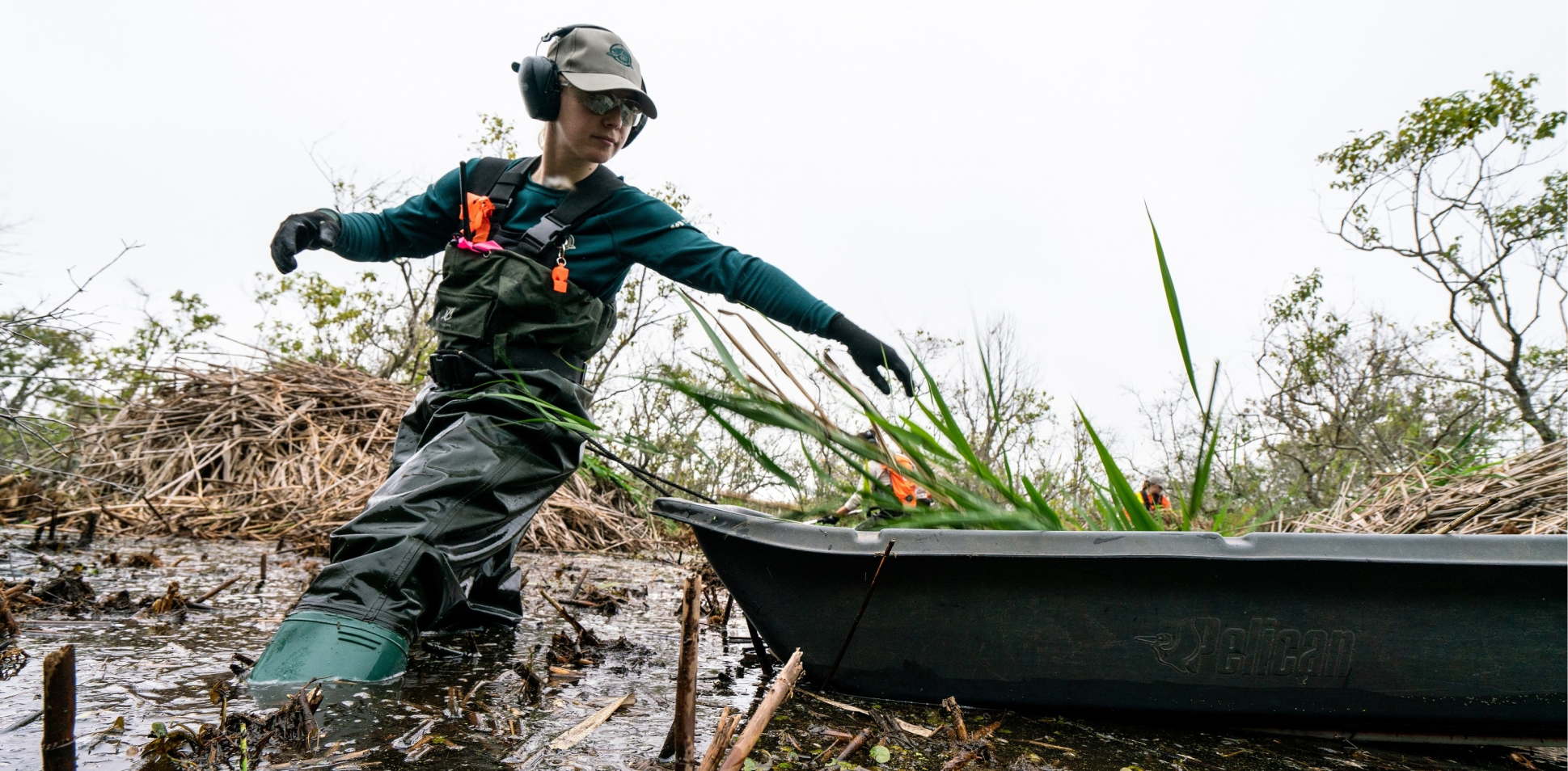
Implementing the plan
Over the past three years of the project, dense stands of invasive Phragmites have been removed from target areas including the eastern shore, the southeastern corner, and the western edge of the marsh. This has been accomplished through a combination of herbicide application on land and cutting Phragmites stems to drown in water. In this picture, parks staff can be seen using a hedge trimmer to cut stems under the water line (top), and hauling the cut stems into piles (bottom).
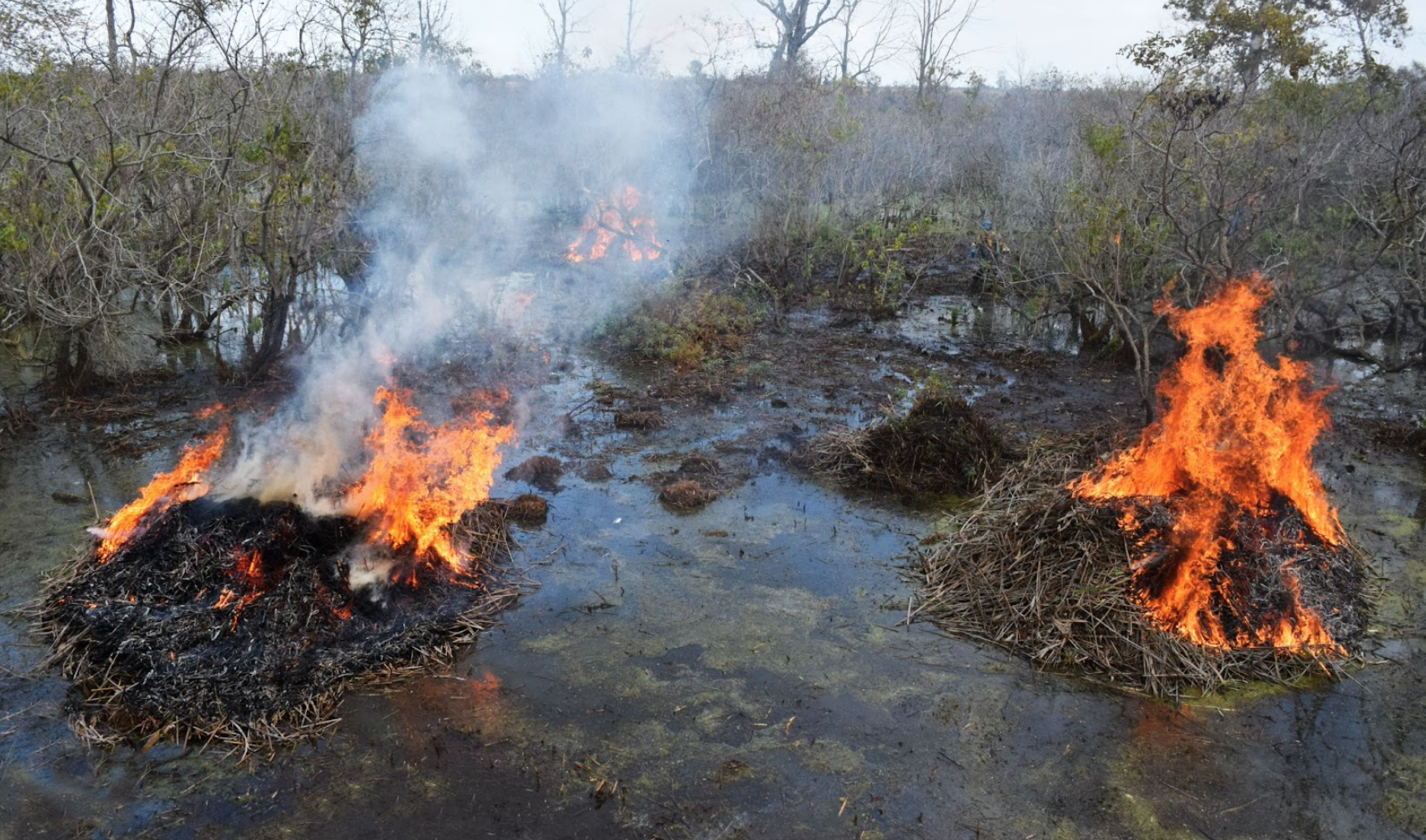
Analyzing and adapting
The original intent was to leave cut invasive Phragmites as mounds to be used for hibernating, nesting, and basking. However, recognizing the incredible amount of biomass left over, many piles have been removed from the marsh through prescribed fire. In this picture, parks staff can be seen burning piles along the western edge of the marsh.
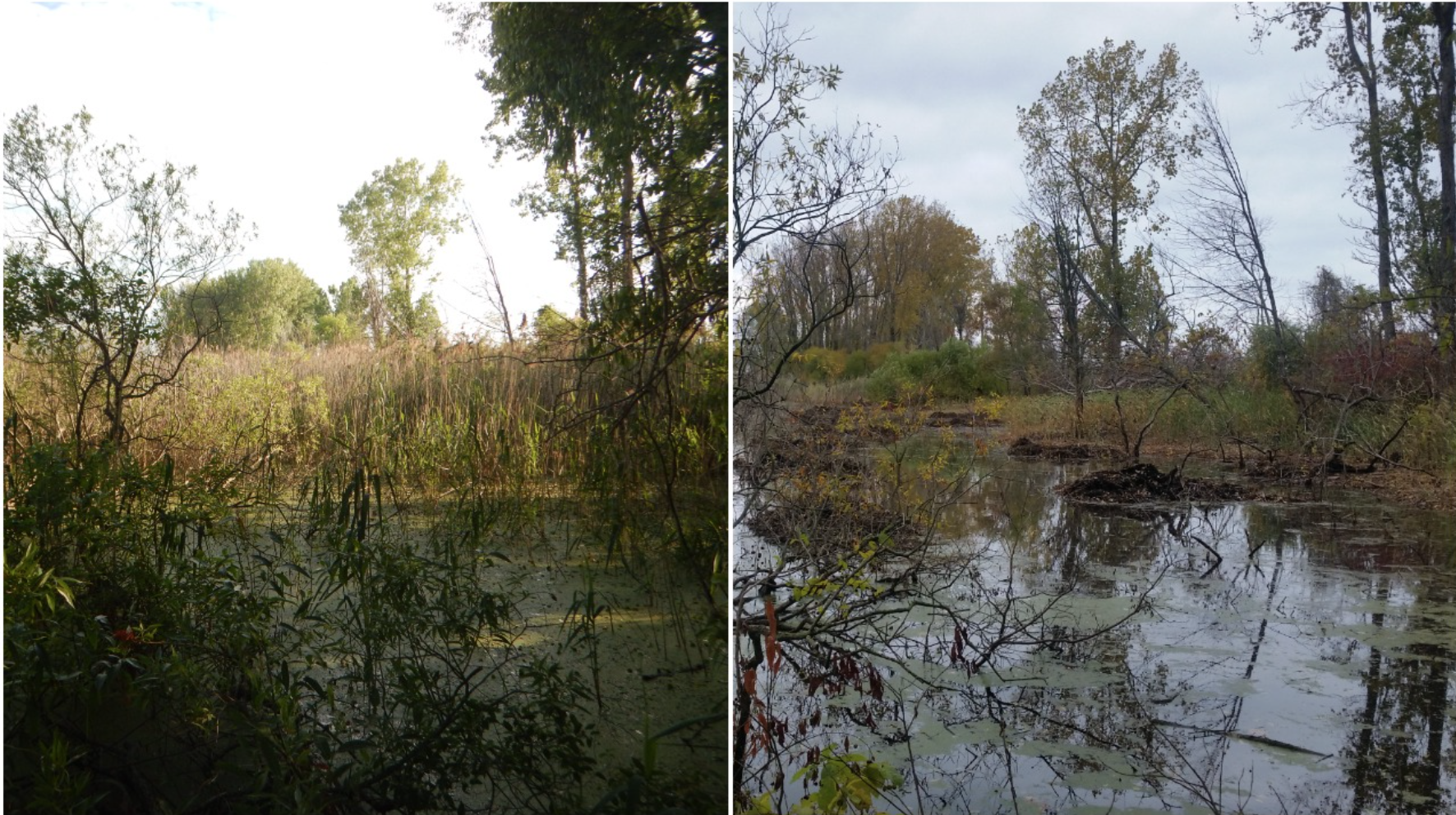
Marsh Restoration Project management work began in 2020, and will continue through 2023. In the southeastern corner of the marsh, removing dense stands of invasive Phragmites has opened up habitat for turtles, birds, and plants alike.
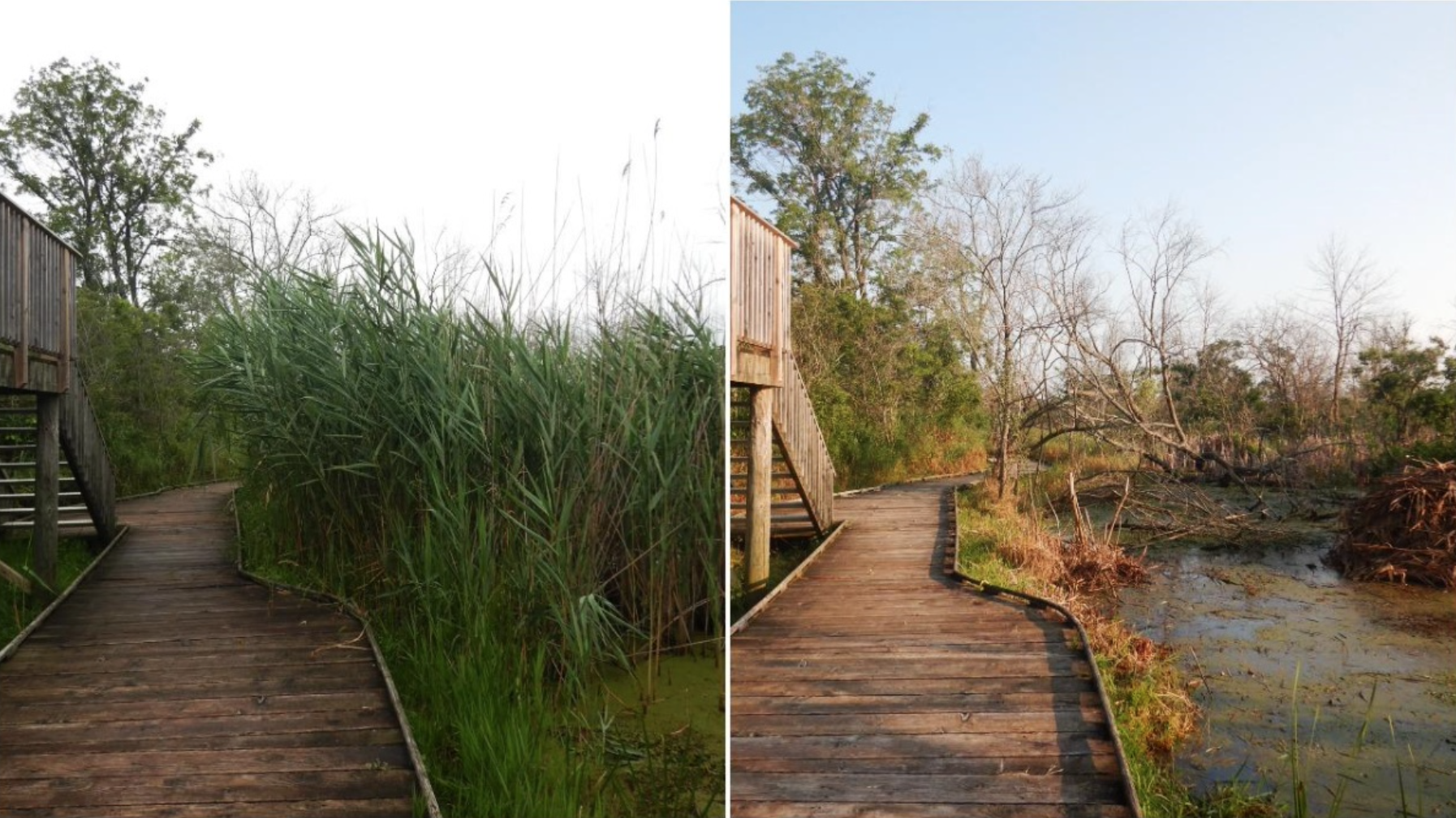
Likewise, at our Delaurier Trail lookout area, removing dense stands of invasive Phragmites has provided visitors with excellent viewing opportunities for birds, watersnakes, frogs, and turtles.
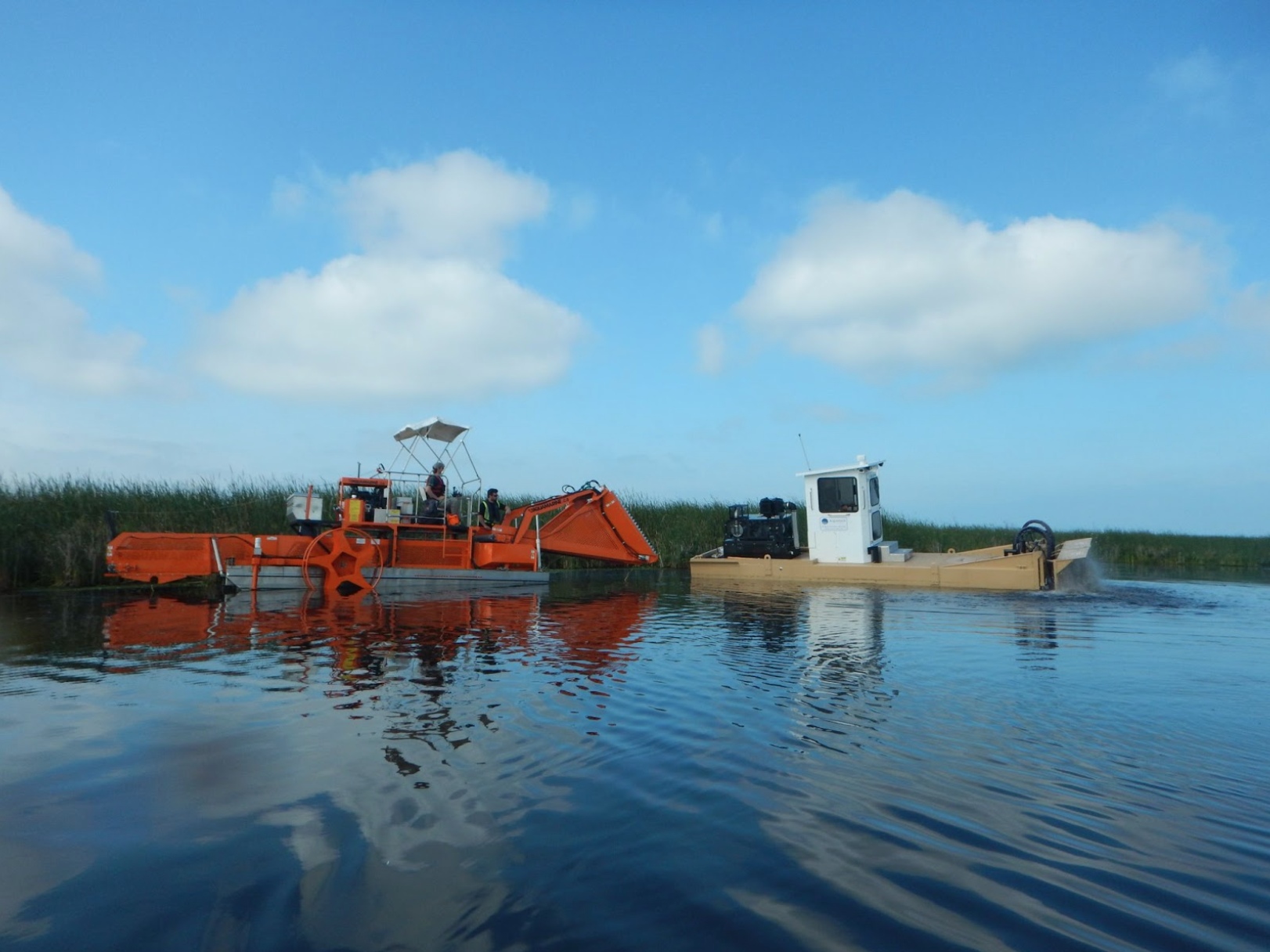
In areas of the marsh that have closed in by invasive cattail mats, heavy machinery is being used to reopen channels and ponds. The Aquatic Vegetation Cutter is designed to chop through dense mats, while the Aquatic Weed Harvester gently scoops up loose debris left afloat, and deposits it along the edges of newly created open water habitat. This work has not been without its challenges, but the lessons learned are invaluable.
Before (left) versus after (right). Preliminary work with heavy machinery has already shown great results. What was once dense floating cattail mat has been reopened to fish, reptiles, invertebrates, birds and even canoeists.
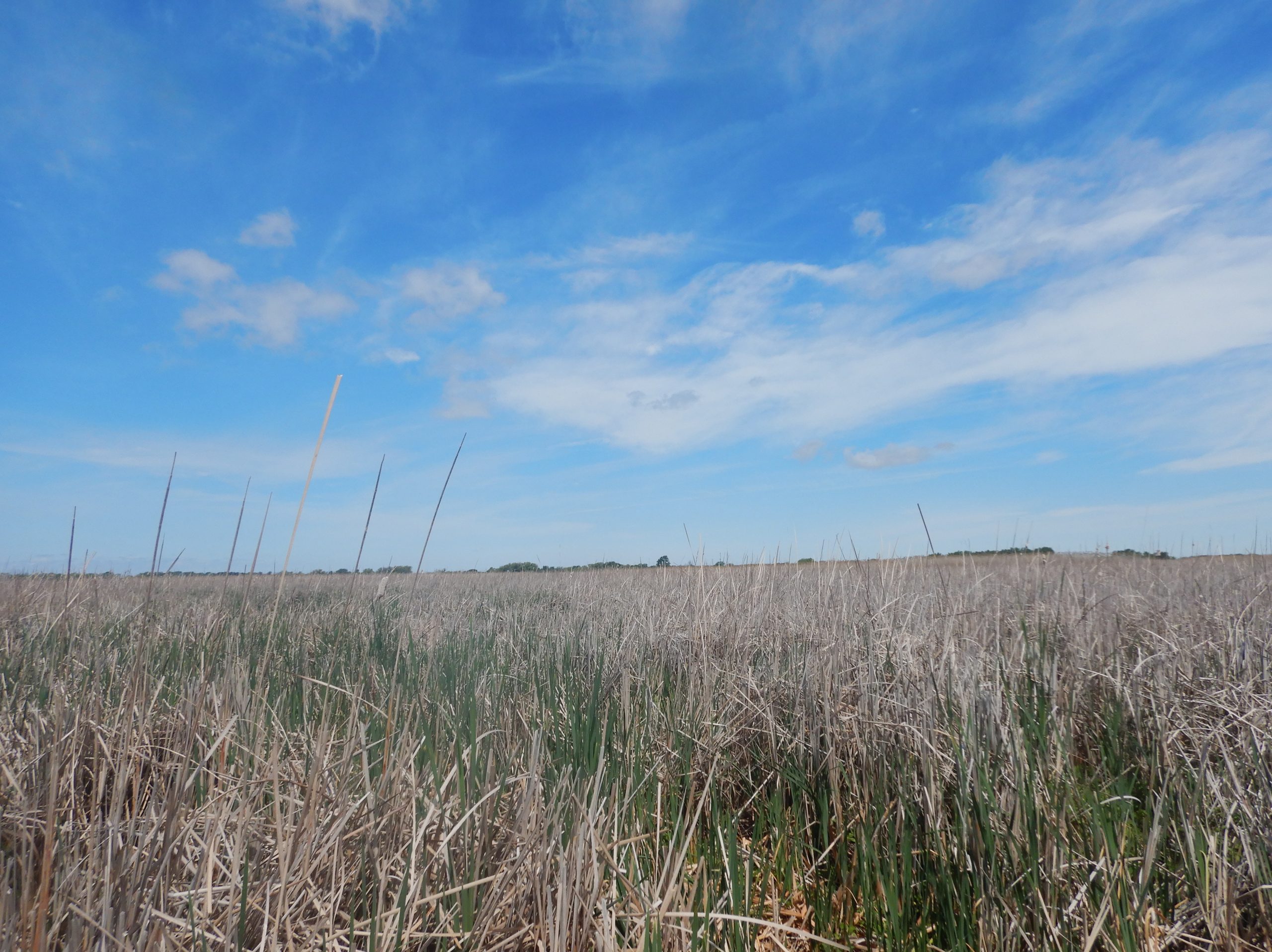
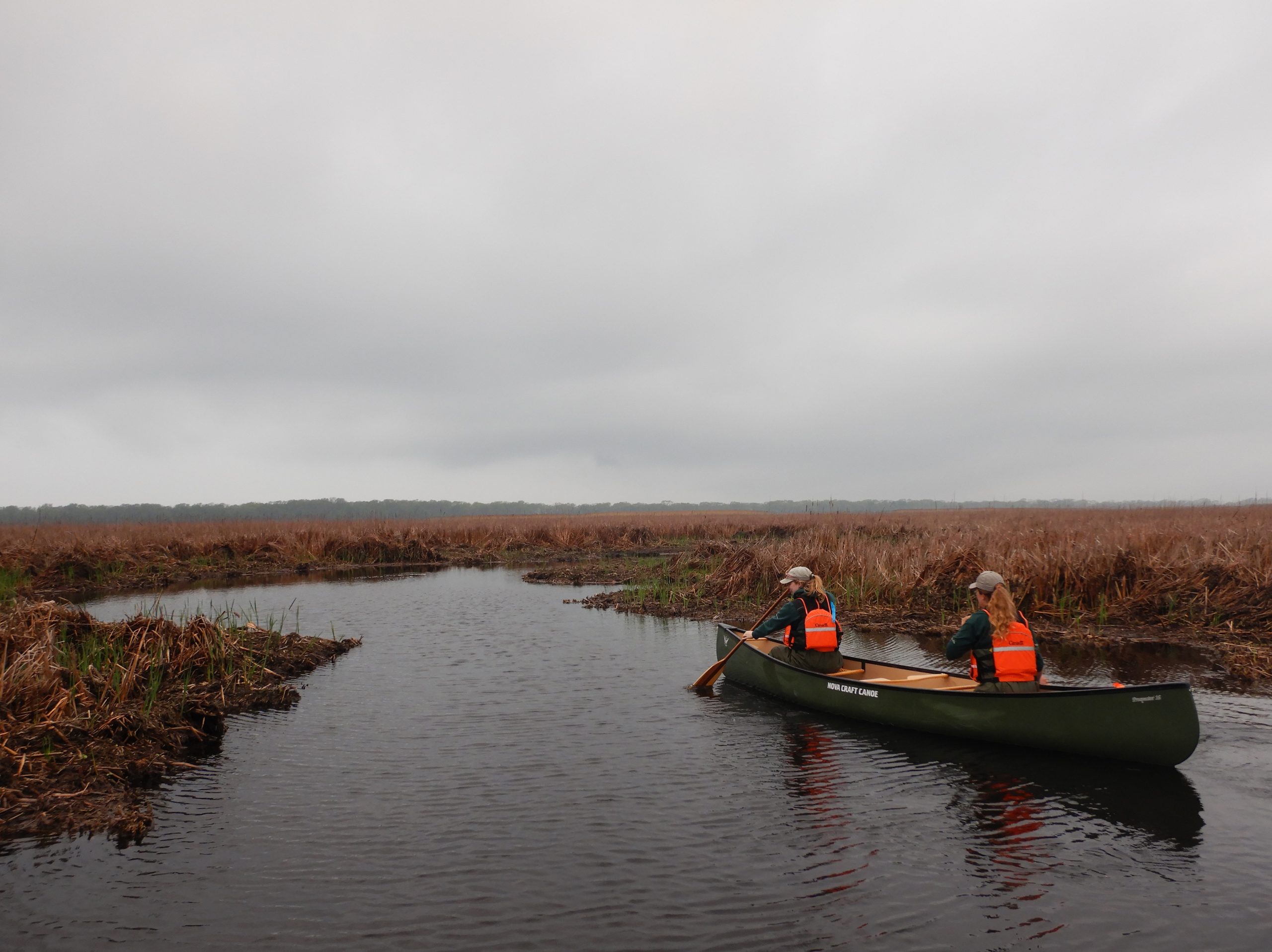
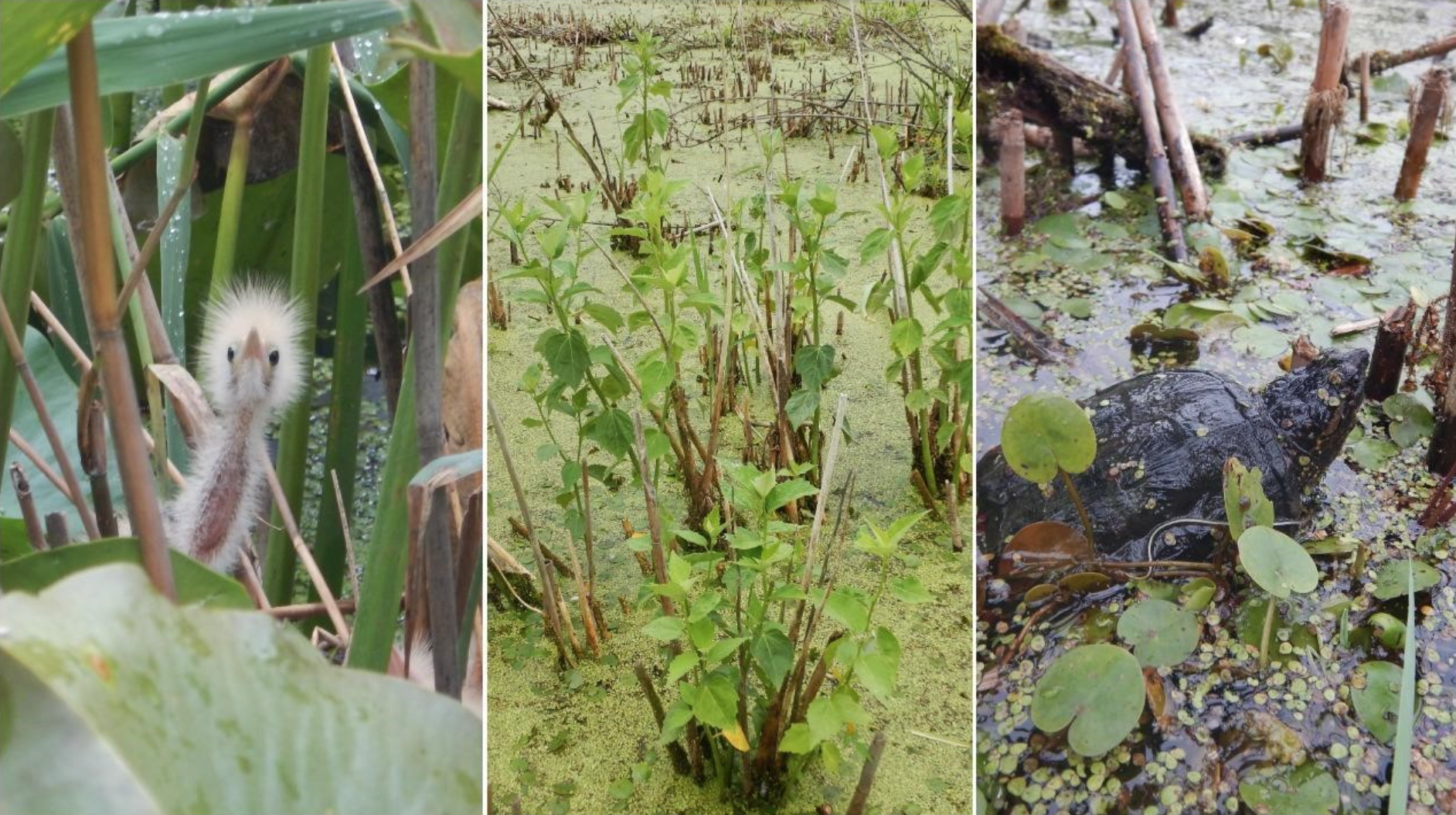
Sharing
Many species have been observed in all our management areas since the beginning of restoration work. Species at risk such as Least Bitterns, Swamp Rose Mallow and Snapping Turtles, among many others have already taken advantage of newly opened habitat. We will continue to share our results, observations and lessons learned in many ways (like this) for years to come!
Learn more about the 2022 photo story competition here.
Download CS
The Conservation Standards is the product of inputs, field tests, and discussions among members of the Conservation Measures Partnership (CMP), which has final editorial authority over the Conservation Standards. Substantial input was also provided by members of the Conservation Coaches Network (CCNet) and other CMP partners.
Photo Credit: Felix Cybulla
Support CS
The biodiversity conservation community is tackling large, complex, and urgent environmental problems where the stakes are high. However, we don’t have a fully functional system to assess the effectiveness of our actions. Without more rigorous measurement of effectiveness and disciplined recording of our efforts, we cannot know or demonstrate that we are achieving desired results.
Photo Credit: Felix Cybulla
Our Collaborators
Every organization, agency, project, and individual has its own preferred set of terms. There is no right answer – the most important thing is that the members of your project team and the people with whom you work have a clear and common understanding of whatever terms you choose to use.
Photo Credit: Chris Scarffe
Contact Us
To inquire about supporting Conservation Standards (CS) or for general inquiries, please contact us at CMPinfo@ConservationMeasures.org
Photo Credit: Nature Conservancy of Canada
